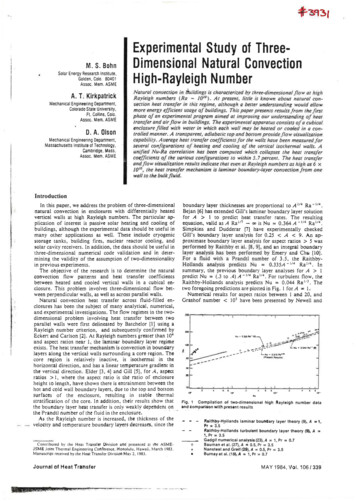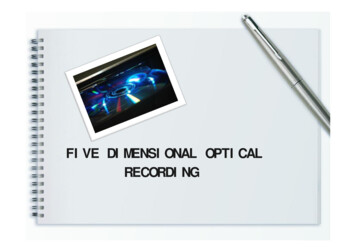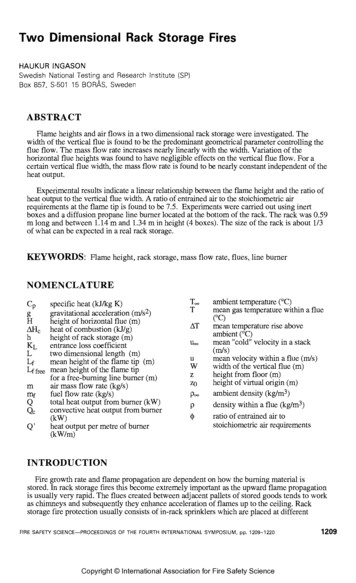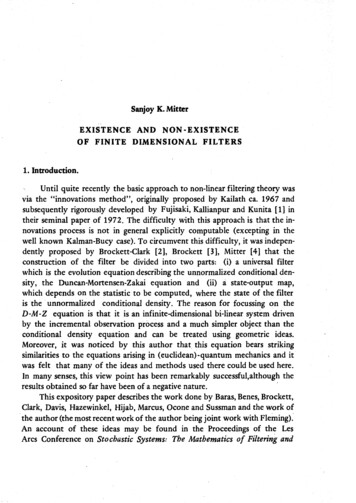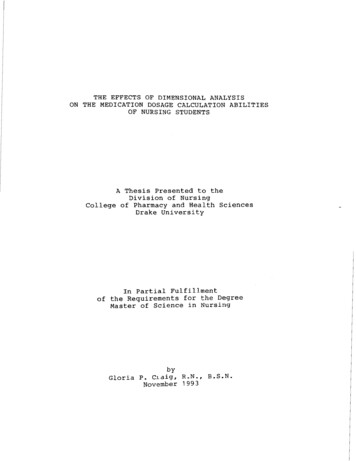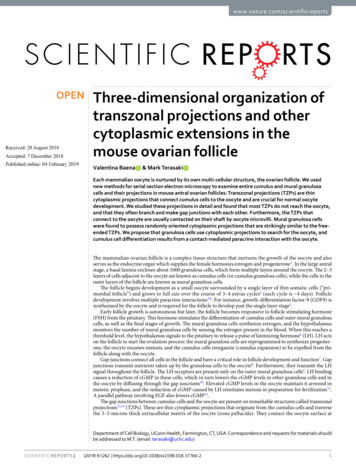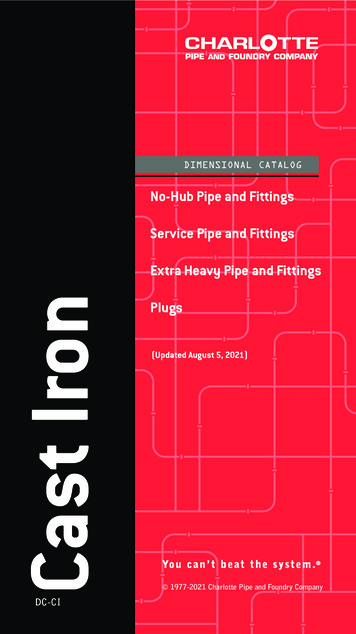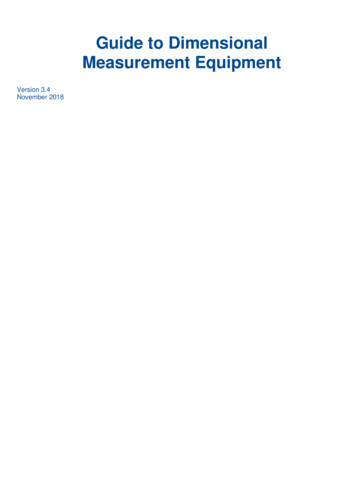
Transcription
Guide to DimensionalMeasurement EquipmentVersion 3.4November 2018
Contents12Preface . 3User Guide . 42.12.23General Measurement Guidelines . 63.13.23.33.43.53.63.74How can this guide help me? .4How does the Capability Chart work? .4Equipment Selection .6Validation of Measurement Systems .7Regular Monitoring of Capability .12Asset Care .14Part Preparation .18Calibration .19Standards, Training & Further Reading.20Measurement Equipment Guidelines . .154.164.174.184.194.204.21Micrometers .21Callipers (Digital, Dial & Vernier).25Depth Gauges .29Height Gauges.32Contact Bore Gauges .35Air Gauges .39Large Bore Gauges - ‘Spider’ Gauges .40Adjustable Snap Gauges .42Ultrasonic Gauges .44Beam Comparators.46Indicators .48Attribute Gauges.51Visual Comparators .53Surface Finish Instruments .55Roundness & Form Machines .60Profile Projectors .62Hand-Held Laser Scanners.643D Structured Light scanning systems .66Coordinate Measurement Machines (CMM) . 69On-machine Probing .74Laser Trackers.765 Glossary . 79Change History . 892
1 PrefaceInspection and measurement processes play a significantpart in any production system and are crucial todemonstrate the conformance of manufactured product.The data gathered can be used to calculate Right FirstTime (RFT), throughput, quality, scrap rates, productiontimes and other business metrics. Furthermore, robustmeasurement processes are critical in situations ofquality improvement and new part introduction.This guide aims to supplement the general measurementknowledgebase by providing guidance on commonissues encountered within the measurement andinspection field. This guide has been created with thesupport of experienced Measurement Specialists,Manufacturing Engineers, Inspectors, Operators andother users who have experience working withmeasurement equipment.This document provides guidance on suitable equipmentand methods to meet the intent of the local qualitysystem. It is not a list of requirements, and neither is itprescriptive or mandatory.The capability charts provided in this document provide aguideline of measurement system capability in order toaid initial measurement systems selection. Validation ofmeasurement systems must always be performed in linewith the local quality system and customer requirements.Theimagesaccompanyingthecapability charts are for illustrativepurposes only, the chart shows thecapability for a generic device not theexact model depicted.GOM3
2 User Guide2.1 How can this guide help me?This guide can be helpful to anyone within a manufacturing or design environment undertaking tasks such as: Creating the inspection plans for newly introduced parts. The capability charts and descriptions can beused to select a suitable inspection method for each feature, prior to validating the measurementsystem with techniques such as Gauge R&R. Identifying high-risk measurement processes and prioritising them for improvement.Specifying a tolerance on a particular feature; this guide can be used to evaluate if the feature ispractical to measure2.2 How does the Capability Chart work?A capability chart shows the likelihood that acceptable Gauge R&R results may be produced by a particulargauge in a typical application. These capability charts are based on data from an extensive set of practicalgauge studies. As such, they indicate the likely capability for a gauge used to measure a particular size andtolerance. However, product and application specific factors can degrade the indicated performance, and it isthe responsibility of each business area to assess whether they need to conduct additional measurementcapability studies to validate a gauge for use in their situation. Systems in the green zone may be used without further validation where there are no factors whichmay reduce the capability for the system considered e.g. poor access to the feature, flexiblecomponent or rough irregular surface.Systems in the amber zone have the potential to achieve acceptable capability, but require furthertesting to validate the system.Systems in the red zone are unlikely to achieve acceptable capability and therefore should be avoided.Figure 1 shows a typical capability chart. To read the chart, find the closest value to the Feature Size on thevertical axis and read it across to the closest value to the Specified Tolerance. Interpret the colour of thecorresponding cell according to the key shown below the chart.Figure 1 - Typical Gauge Capability Chart4
A part requiring measurement can be grouped according to the strength of its characteristics:2.2.1 Strong Characteristics:A solid, prismatic component with a good surface finishA straightforward measurement (e.g. the diameter of a hole or length of a cylinder)There are no accessibility issues associated with the measurementThe component is manufactured using a consistent machining processA measurement system for a feature with strong characteristics has a higher likelihood of achieving anacceptable Gauge R&R result. Consequently the amber zone in Figure 1 could shift left as tighter tolerancesmight be measureable.2.2.2 Weak Characteristics:A complex component with an irregular shape and/or poor surface finishA complicated measurement needs to be made (e.g. concentricity)The user faces accessibility issues in making the measurementThe component is manufactured using a highly variable process, with significant differences betweencomponentsA measurement system for a feature with weak characteristics has a lower likelihood of achieving anacceptable Gauge R&R result. In this case the amber zone in Figure 1 may shift right as the system becomesless capable.2.2.3Equipment resolutionEquipment resolution should also be considered in addition to the capability charts. In general a 1:10 ratio, orbetter, of resolution to product tolerance is recommended. Where this is not achievable, capability tablescannot be relied on and measurement system capability should be demonstrated. Poor resolution to tolerancemeans an insufficient number of measurement intervals across the product tolerance.5
3 General Measurement Guidelines3.1 Equipment Selection3.1.1Feature Selection6
Figure 2 - Feature Selection Chart3.2 Validation of Measurement SystemsBefore a measurement system is used to inspect a part it must be validated to ensure that it is capable and fitfor purpose. A measurement system should have a small repeatability, reproducibility and bias relative to thetolerance band being measured. A Gauge R&R study is normally used to assess repeatability andreproducibility whilst bias is assessed with a comparison to an independent system. Depending on the type ofmeasurement system and resources available a choice must be made between several methods ofmeasurement system validation.7
Table 1 summarises these methods:MethodGauge R&RTypicalApplicationMicrometer, HeightGauge, BoreMicrometer, CMM.AcceptanceCriteriaTotal GaugeR&R (number ofstandarddeviations forstudy variationset to 6) 20%of toleranceBias StudyTo support tests ofvariationBias 10% oftoleranceType 1 StudyWhere time orresource limitationsprohibit a full studyevaluated at 20%of total toleranceAttributeAgreementAnalysisGo-No Go gauges,Plug gaugeK 0.75Complexmeasurementsystems wherenormal methodscan’t be applied.Expandeduncertainty ‘U’,with a coveragefactor k 3,should be lessthan or equal to10% oftoleranceMeasurementUncertaintyCgk 1.00NotesGauge R&R with an assessment ofbias should be used in mostcircumstances where multiple partsand operators are available.A bias study is used in support oftests of variation, such as GaugeR&R or Type 1 to give anassessment against a knownreference to give bias.Type 1 studies are useful to quicklyassess the repeatability and bias of agauge but do not assessreproducibility. These should beused where full Gauge R&R is notpractical or possible.Attribute studies test the level ofagreement between multipleoperators and measurements. Theseare useful for measurement systemswhich give a pass or fail result andnot an actual measured value.Measurement uncertainty is acomplex technique which can assessall aspects of a measurementsystem. Practical tests andtheoretical calculations can becombined to understand the overalluncertainty in a measurement. Thistechnique is useful when it is difficultor impossible to use techniques suchas Gauge R&R.Table 1 - Validation MethodsMany reference guides exist on carrying out these studies, some of which are listed in the Standards, Trainingand Further Reading section.8
3.2.1Bias and Reference MeasurementsTechniques such as Gauge R&R are good at assessing the repeatability and reproducibility of a measurementsystem. However, it is possible to be repeatable and reproducibly wrong! The measurement system could givevery stable results over a range of repeats and operators but could be consistently reading small or large. Thiserror is called bias. Calibration will help to minimise bias however an element of bias can come from theapplication itself.In order to assess bias it is important to get data from an independent measurement system. By taking theaverage of several results (5-10 typically) from the independent measurement system and comparing this tothe Gauge R&R results the bias can be assessed.The difference between the two systems should be no more than 10% of feature tolerance.Figure 3 - Gauge R&R and Bias Assessment3.2.2Gauge R&RWhen performing a Gauge R&R study it is important to ensure a practically achievable and statisticallysignificant sample is taken. Table 2 shows the minimum number of repeats which should be used for a givennumber of parts and operators.Table 2 - Minimum numbers of repeats for operator and part combinations9
3.2.3Validation - Frequently Asked QuestionsQ1: “We only have 2 operators using this gauge, shall I take part in the study to increase thenumber of operators?”A1: “Not unless you are trained to use the gauge and familiar with the component being measured.Having an untrained operator may result in the failure of the study due to the stability and/orreproducibility of the measurements due to the un
A solid, prismatic component with a good surface finish A straightforward measurement (e.g. the diameter of a hole or length of a cylinder) There are no accessibility issues associated with the measurement The component is manufactured using a consistent machining process
